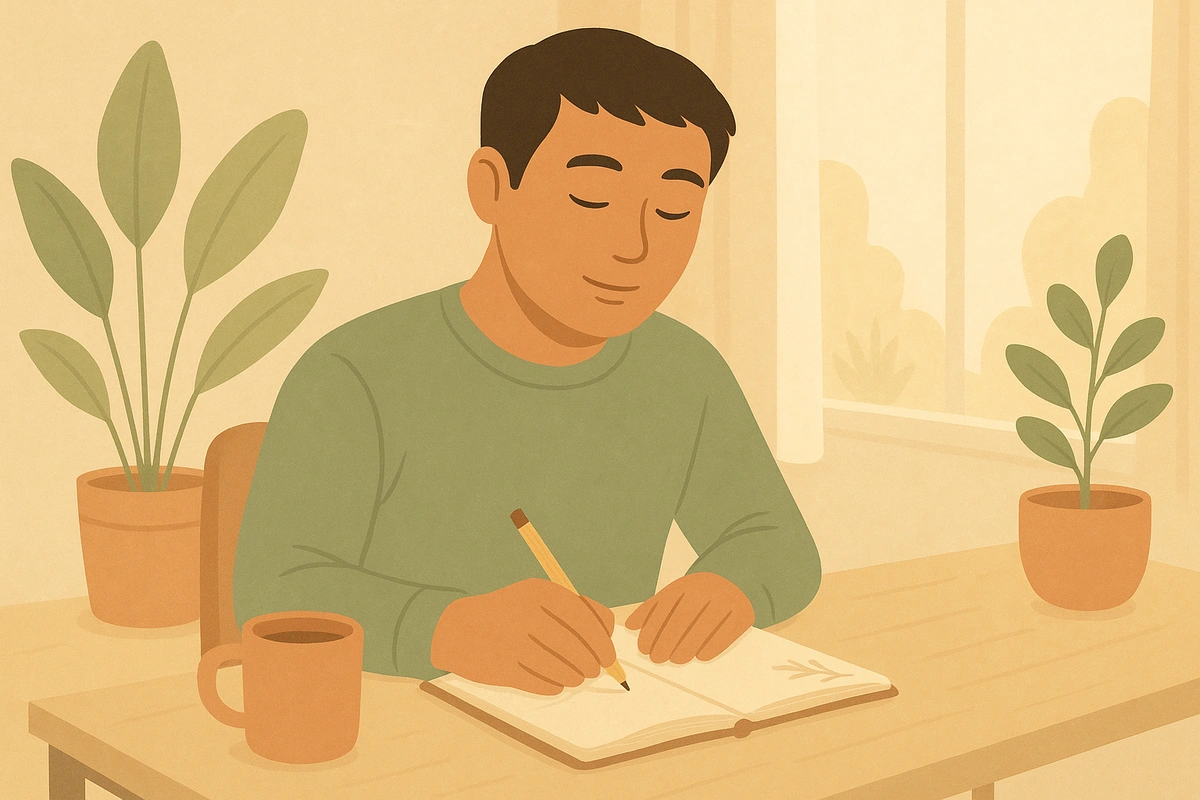Creating an anxiety action plan gives you a clear roadmap of steps to take when anxiety starts building before it becomes too much. This personal guide helps you respond quickly and well to anxiety symptoms using strategies you know work for you.

Create an anxiety action plan by finding your personal anxiety warning signs and mapping out specific coping strategies you can use right away when symptoms appear. This written guide gives you clear steps to follow when anxiety clouds your thinking and makes decisions hard.
Anxiety often feels random and too much because it takes over your thinking when you need clarity most. An action plan works like a fire escape route - you create it when you're calm so you know exactly what to do during an emergency. Having set steps removes guesswork and gives you quick direction when anxiety tries to take control.
Anxiety action plans work by engaging your thinking brain during calm moments to create behavioral blueprints for crisis situations. When anxiety activates your brain's alarm center and hurts clear thinking, having set responses bypasses the need for complex decision-making.
The planning process builds what psychologists call cognitive scaffolding - external support structures that help maintain emotional control when internal resources become overwhelmed. Written instructions reduce mental load during stress by removing the mental effort needed to remember and organize coping strategies.
Action plans activate your body's relaxation response more quickly because you move directly to proven calming methods instead of struggling to figure out what might help. Research shows that structured coping responses significantly reduce anxiety duration and intensity.
The severity-based organization helps you match intervention intensity to anxiety level, preventing under-response to serious episodes or over-response to mild worry. This calibrated approach builds confidence and prevents the secondary anxiety that comes from feeling unprepared.
Written format engages multiple brain regions involved in memory consolidation, making strategies more accessible during crisis moments. Studies indicate that people who write down coping plans demonstrate better recall and implementation during actual anxiety episodes.
Practice during calm periods creates what behavioral scientists call implementation intentions - automatic behavioral responses triggered by specific situations. This mental rehearsal strengthens neural pathways that support effective anxiety management.
"I forget to use my action plan during anxiety episodes" - This happens to most people initially. Set phone reminders to practice weekly and consider wearing a physical reminder like a bracelet that cues action plan use.
"My strategies don't work when anxiety gets really intense" - Severe anxiety often requires simpler, more immediate interventions. Focus on basic breathing and grounding before attempting complex methods, and consider professional support for intense episodes.
"I can't think clearly enough to follow written steps" - Simplify your plan to 3-4 basic actions maximum. Use larger fonts, symbols, or voice recordings to make instructions more accessible when anxiety hurts concentration.
"My anxiety changes too much to predict effective strategies" - Create flexible plans with multiple options for different anxiety types rather than trying to predict exact responses. Include a variety of quick, medium, and longer-term strategies.
"Planning for anxiety makes me more anxious" - Keep planning sessions brief and focus on one section at a time. If planning increases anxiety, consider working with a mental health professional for guided support.
"My action plan feels too complicated to use quickly" - Streamline to essential strategies only. Start with 2-3 proven methods and add complexity gradually as you become comfortable with basic implementation.